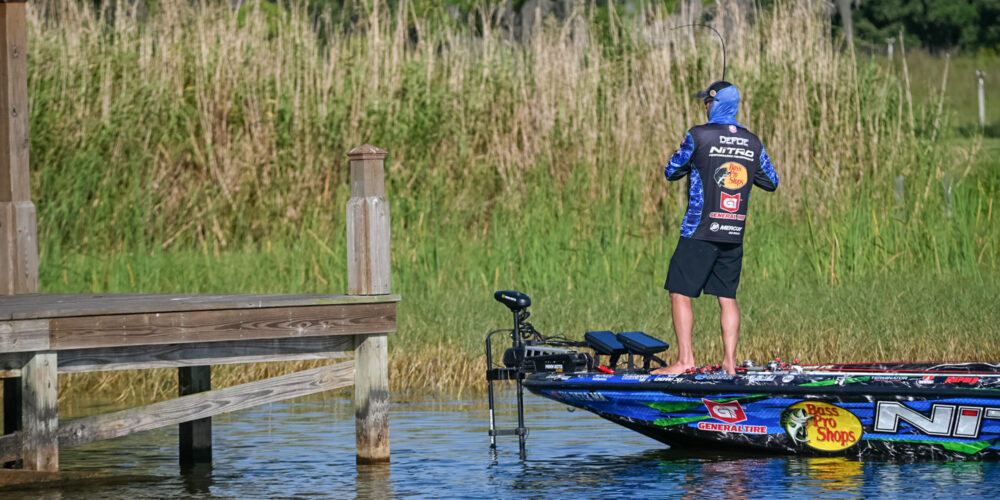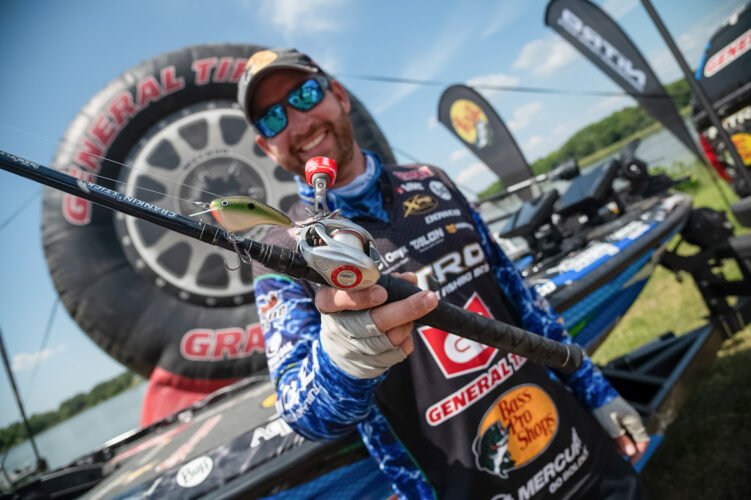DeFoe’s ‘Pattern Inside the Pattern’ on the Harris Chain Carried Him to Victory

Ott DeFoe’s victory on the Harris Chain looks pretty cut-and-dried on the surface: shallow water fishing in Florida around grass and visible cover. But there was way more nuance to the Mercury Pro Team member’s pattern of slinging a crankbait and a jig than meets the eye.
DeFoe’s winning approach revealed itself during practice, but really didn’t become his primary game plan until his second day of competition.
“I essentially landed on my winning pattern during practice,” DeFoe confirmed. “I started on Harris. The wind was blowing and I ran across the lake, saw a Kississimee grass point with wind blowing on it and birds feeding, and caught a nice fish there on the white jig. Then I caught one on a cypress tree, and then got to a dock and caught a couple on my Rapala OG Slim crankbait. I’d hit similar areas and get bites. It was all about the hard edge. Whether it was shallow or deeper, it was about an edge.”
Sounds pretty basic – simple even – but DeFoe didn’t stick with his winning pattern initially. On the first day, he fished a green pumpkin jig and other baits. He didn’t fish Harris, but Lake Griffin. But after that day, the pieces of the puzzle started falling into place.
“I caught some fish, but knew it wasn’t a winning approach,” DeFoe said. “On Days 2 through 4, I fished on Harris and used my two-bait approach. I used a ⅜- or ½-ounce prototype, lighter-wire-hook swim jig I’m developing with Terminator. No braid – 17-pound XPS fluorocarbon line for the swim jig, not the typical Florida setup. A medium-action rod, too. They really stayed hooked.
“I fished the Slim on 14-pound XPS fluorocarbon. I’d say I caught about 60 percent of my fish on the jig and the rest on the Slim.”
How Ott Fished the Swim Jig
The key for the jig success was keeping the bait higher in the water column and focusing on a “shad spawn.”
“I initially thought I was fishing just a shad spawn early in the day, ” DeFoe said. “But after thinking about it, there are other baitfish there as well. So really a baitfish spawn, the entire approach was really a baitfish bite. That’s why I went with the white jig and not the typical dark stuff most anglers fish in Florida.”
“The water was extremely dirty, and I found that I had to keep the jig in the top 12 to 18 inches of the water column. I’d keep the rod up and shake the jig as I retrieved it. I had to fish it pretty fast because, if I fished slower, the jig would be under the fish. Even though they were feeding up, they wouldn’t take the topwater for me.”

How Ott Fished the OG Slim
The OG Slim will dive to about 6 feet, but DeFoe was catching bass in water shallower than that.
“The Slim isn’t a squarebill,” DeFoe pointed out. “With long casts, it’ll run down to 6 feet. I was fishing it on 14-pound line, and it’ll run down to about 5 feet. But I wasn’t looking for that (depth). I was making short casts – maybe 20 or 30 feet – under docks or by a cypress tree with it. Anywhere there was less grass so I could fish it. With short casts, the Slim got down quickly, but never to maximum depth allowing me to effectively fish and catch bass.
“I came up with that pattern in practice. I’d be sitting in 6 feet of water and cast up to just inches of water. The bites came within the first 10 feet of the retrieve, trying to bounce it through cover. The action and profile of the Slim is what they wanted. The depth matched pretty well with the short casts. I needed a bait that would dive quickly to the strike zone and Slim did it.”
Repetitive casting to small targets was also a major component of DeFoe’s success on the Harris Chain.
“Throwing to the same seawall, cypress tree, under the same dock was huge,” DeFoe said. “I promise you, there were times when my Talons were down for 5 minutes throwing at the same stump until the bass would bite. There were key little spots I’d have to pick apart.
“I figured that out a little in practice, but what really clued me in was on Day 2 on Lake Harris. I’d pull up to a stump and fish were busting and I’d catch one or two. They’d stop biting. I’d be about ready to leave pulling my Talons up, then the fish would start to bust the surface again. It became obvious there were way more bass in those small areas than I imagined, and I obviously didn’t catch them all. Literally, some of these spots were the size of my boat. The repetitive casting really paid off for me.”
DeFoe’s best action all week long was early in the first period.
“The first period was generally pretty special over the last three days,” DeFoe confirmed. “Looking back on the week, I really didn’t try hard in the third period, except on the final day, I really pushed it. I’d catch them at the beginning or the end of the second period, but that was an adjustment period each day for sure. The final hour and half of the third period, they went to chewing (again).”